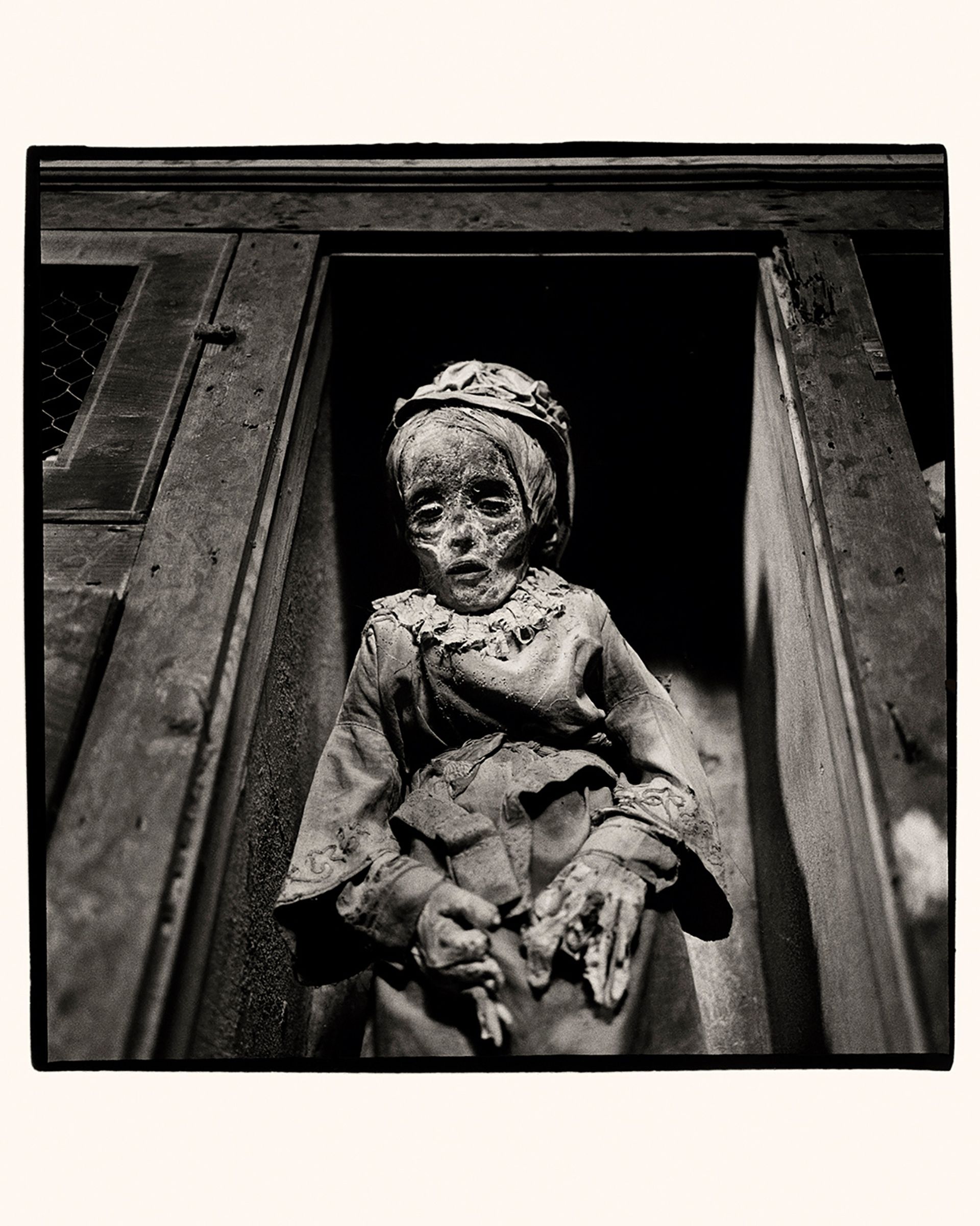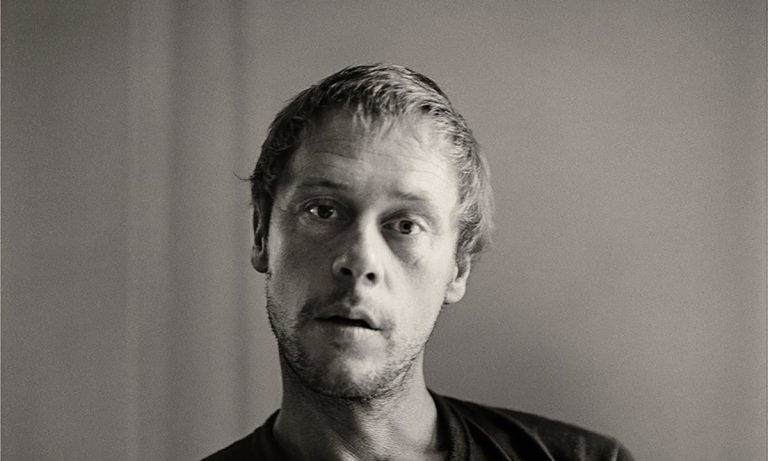Photography “turns the whole world into a graveyard,” wrote Susan Sontag. “Photographers, connoisseurs of beauty, are also, knowingly or unwittingly, the recording angels of death.”
Sontag was writing a year before her book was published About Photography (1977), expanding the subject in what remains a key text on the environment and its influence on society. The words appeared in an essay to go with a book by a photographer little known beyond his bohemian circle of friends and acquaintances, the demi-monde of New York’s downtown scene in the mid-1970s. It was the only book the photographer published, 11 years before his death from an AIDS-related illness in 1987, and almost two decades before his reappraisal as a key American photographer of his generation was cemented by an exhibition at the Stedelijk Museum in Amsterdam.

Catacombs of Palermo #6 (Girl with Gloves) is from a series of photographs Hujar took during a 1963 visit to the Capuchin Catacombs in Palermo, Sicily. © The Peter Hujar Archive/Artists Rights Society (ARS), NY
His posthumous celebration has since moved beyond his status as a cult figure in a time and place and a community of people that have come to be mythologized. And now, perhaps, we are about to reach peak Peter Hujar. British actor Ben Wishaw will play the impoverished but influential photographer in a biopic based on Linda Rosenkrantz’s book. Peter Hujar Dayrecounting a conversation recorded in 1974. But before that, Hujar’s 1976 book Portraits in life and death is being exhibited at this year’s Venice Biennale, one of 30 collateral events selected by curator Adriano Pedrosa to fit the theme, Foreigners everywhereand its focus on queer and indigenous figures.
The exhibition will present the 41 photographs from the book at the Chiesa di Santa Maria della Pietà, near the Doge’s Palace, organized by the Peter Hujar Foundation and curated by Grace Deveney of the Art Institute of Chicago. It will have two bodies of work: a series of portraits of fellow artists, writers and performers; and photographs taken of the vaulted mummified remains inside the Capuchin Catacombs in Palermo, taken on a Fulbright grant in 1963 in the company of her lover, the artist Paul Thek.
Peter Hujar knows that portraits in life are always also portraits in death
Susan Sontag
The subjects in the portraits “are standing, sitting, crouching, mostly lying, and are made to seem to be meditating on their own mortality,” wrote Sontag, who also sat for the photographer. “Peter Hujar knows that portraits in life are always, also, portraits in death.” The images of the catacombs clearly marked the writer, because they inspired the setting of a scene in her second novel, death kit. “So there is a very nice exchange between them [Hujar and Sontag] about photography,” says Deveney. “And that shows in his writing. And there’s that really iconic portrayal of her in the series as well.”
Beautiful and morbid irony
Portraits of Sontag, Thek, Divine, Robert Wilson, Fran Lebowitz, John Waters and others from the Lower East Side art scene are interspersed with the lesser immortals of the Sicilian catacombs. “What seems to have caught Hujar’s attention was the beautiful, morbid irony of the dead, framed to look as realistic as possible,” says Deveney. “And then, on the other hand, in many of the portraits, both in the book and beyond, you get depictions of people—chosen friends and family—shown in ways that underline the background of death and life.
“A lot of the figures in the book are reclining or they seem to be sleeping or they’re in these kinds of otherworldly states where they seem to be looking beyond or through. And so that tension between finding the most realistic presentations of death and then stepping on these other states of consciousness within the portraits of the book, is something that is clearly manifested in the juxtaposition.
“portraits it is important because it was the only book that Peter did,” says art critic Vince Aletti, a friend of Hujar, whose portrait also appears in the book and in the Venice exhibition. It is the first time these images have been seen together in Europe, and only the second time they have been shown since their debut at the Matthew Marks Gallery in New York in 2002. “And because he had Susan Sontag write an introduction… he continued to to make a large – and larger – work, but he died before most of it was collected for a book or an exhibition.”
Whether you’re looking at a rough sea, a dead cat, or a celebrity… look as deep as you can.
Vince Aletti, critic
Aletti’s writings played a role in Hujar’s embrace by a wider audience. “Peter never got the recognition he deserved while he was alive, but the work lives on and it’s gratifying to know that people want to know more about the images and the person who made them,” says Aletti.
“I think Peter’s work is moving and sensitive without being the least bit sentimental. Whether he’s looking at a rough sea, a dead cat or a celebrity he’s just met, he looks as deep as he can, determined to convey something simple and true. Something that still has a palpable presence after all these years.”
Top photography shows to see in Venice
- At the exhibition Birth of the Sinking Sun, Inuuteq Storch it sets out to “tell the visual history of Greenlanders, not seen through the eyes of visitors, but through the Greenlanders themselves”. He is the first photographer and the first Greenlandic artist to represent Denmark at the Biennale, presenting hundreds of images of his own daily impressions of everyday life alongside family snapshots and archival material from the self-governing territory’s first professional photographer (see also p29).
- Resisting the colonial gaze is also the theme of many Bolivian artists Claure Riverhis work, in which he responds to the stereotypical representations of his homeland by imagining alternative territories that play with the notions of tradition and modernity. “Identity is a question, not an answer,” says the photographer, whose work will be shown in the Biennale’s main exhibition. Foreigners everywhere.
- One of the rooms in the Nucleo Storico section of the exhibition will be dedicated to an Italian diaspora of 40 artists who moved abroad in the 20th century and who “played an important role in the development of the narratives of Modernism”. Among them is the photographer Tina Modotti who became a fundamental figure of the Mexican avant-garde in the twenties.
- Under the guise of the Institute of Critical Zoologists, Robert Zhao Renhui has spent much of the past 15 years examining man’s complex relationship with the natural world, primarily using photography in his research-based work. He increasingly turns to video, performance and installation, as in this latest project, See Forestshowing in the Singapore pavilion, which explores the notion of secondary forests, “where young organisms are able to thrive despite and because of human activity”.
• Peter Hujar: Portraits in Life and Death, Church of Santa Maria della Pietà, Riva degli Schiavoni, April 20-November 24

